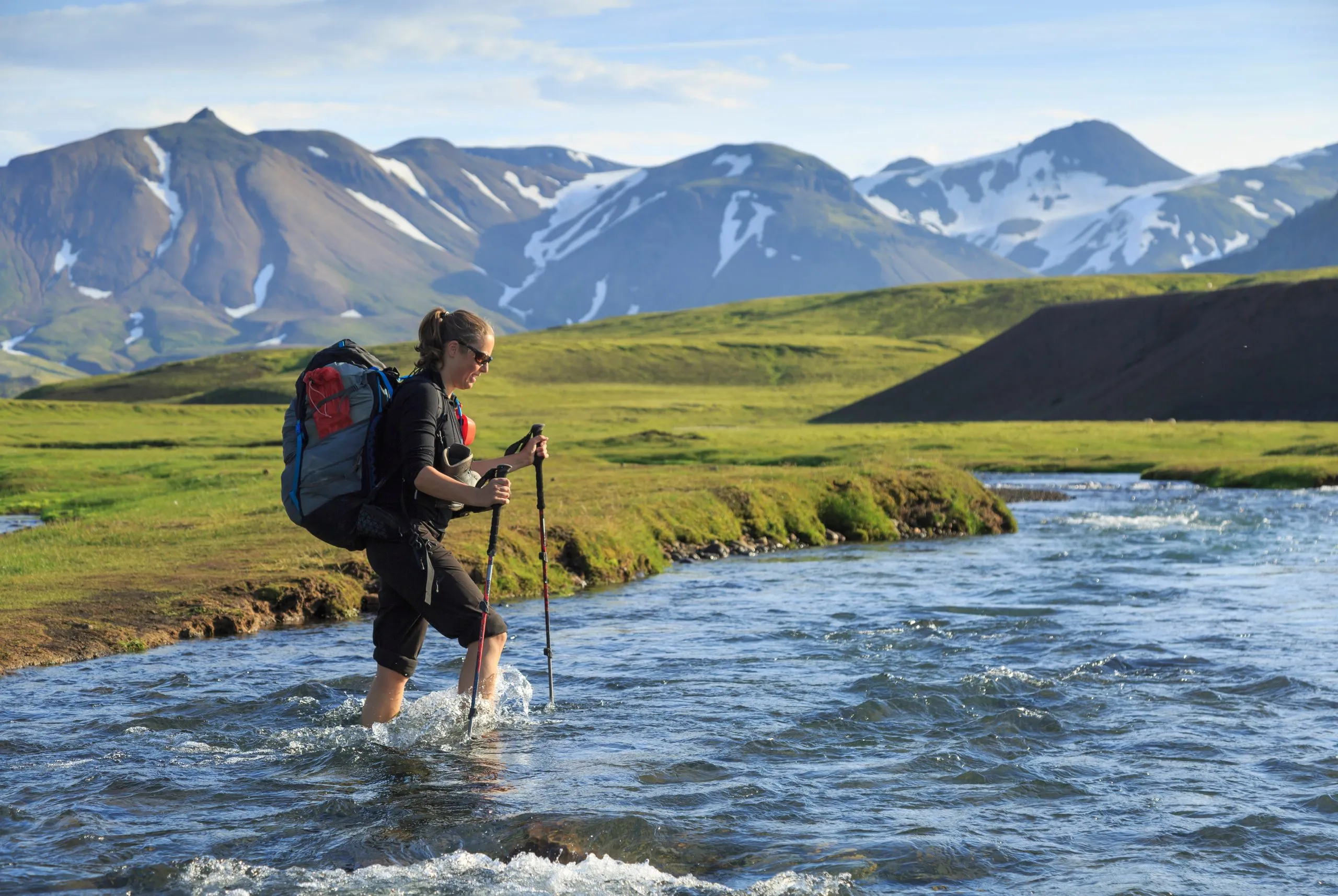
Iceland Hut to Hut Hiking

Iceland’s Iconic Trails: A Photographer’s Guide
Enter your email below to receive your FREE e-book!


Iceland’s Iconic Trails: A Photographer’s Guide
Enter your email below to receive your FREE e-book!

Iceland’s Iconic Trails: A Photographer’s Guide
Enter your email below to receive your FREE e-book!
Iceland’s Iconic Trails: A Photographer’s Guide
Enter your email below to receive your FREE e-book!

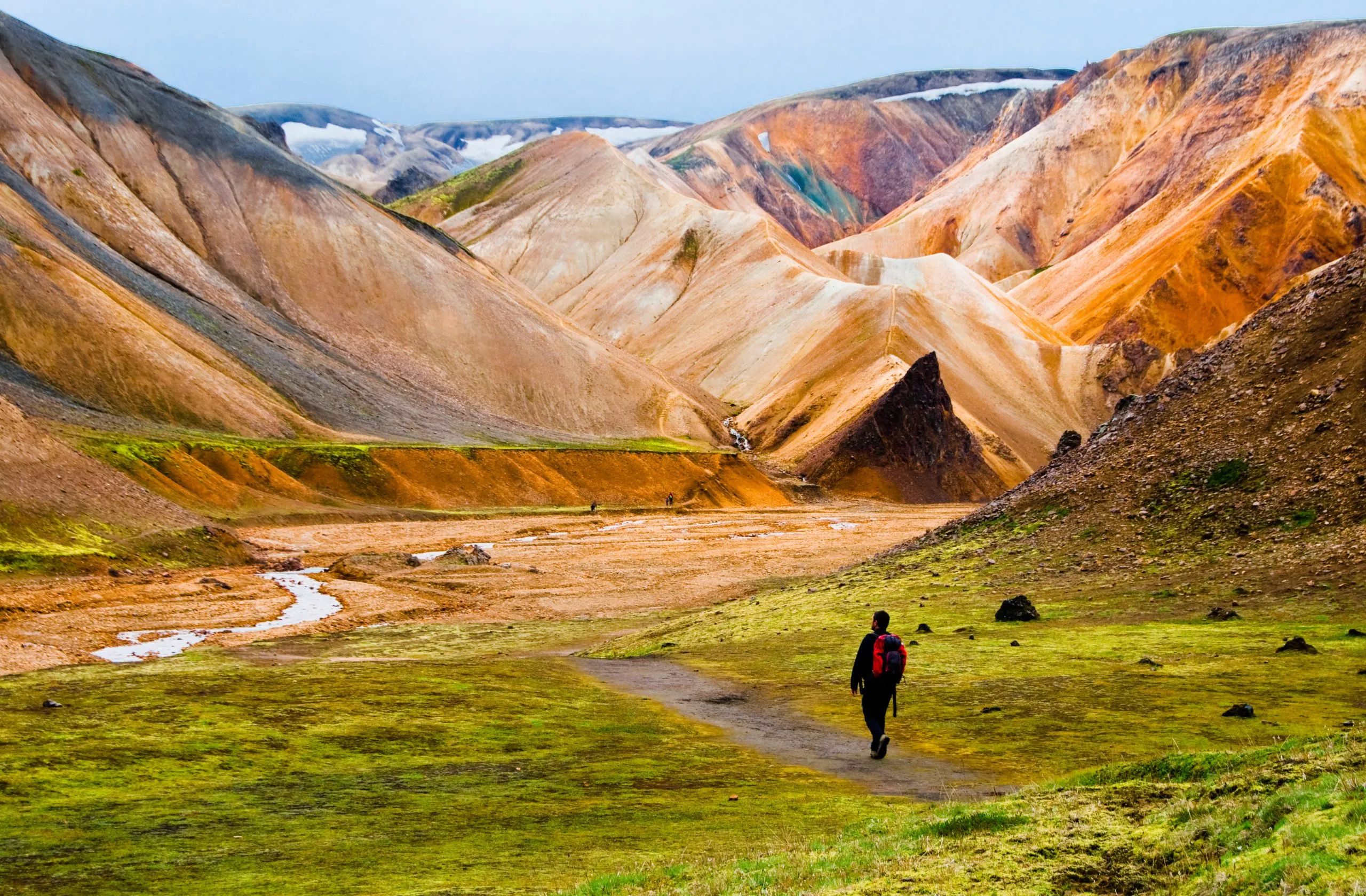
In the heart of Iceland’s untamed natural beauty, Iceland Hut to Hut Hiking offers an experience transcending ordinary hiking adventures.
Specializing in multi-day hiking trips in Iceland, our tours are crafted to unveil the most breathtaking vistas of Iceland, with the famous Laugavegur Trail taking the icing on the cake.
Our treks in Iceland lead you through an ever-changing tapestry of nature’s wonders. From the lush greenery of Þórsmörk valley, with its vibrant mosses and birch woods, to the barren majesty of the black deserts of Mýrdalsjökull, every step is an encounter with a different facet of nature.
You’ll traverse paths that wind around steaming geothermal springs, cross rivers fed by ancient glaciers, and marvel at the panoramic views from mountain ridges.
Whether you’re a seasoned hiker or new to the trails, our trekking adventures are tailored to suit every pace and preference.
Iceland’s mountain huts are basic accommodations designed for hikers and mountaineers. Located in remote areas along some of the best hiking trails, these huts offer a mix of essential amenities and are managed by the Icelandic Touring Association (FÍ).
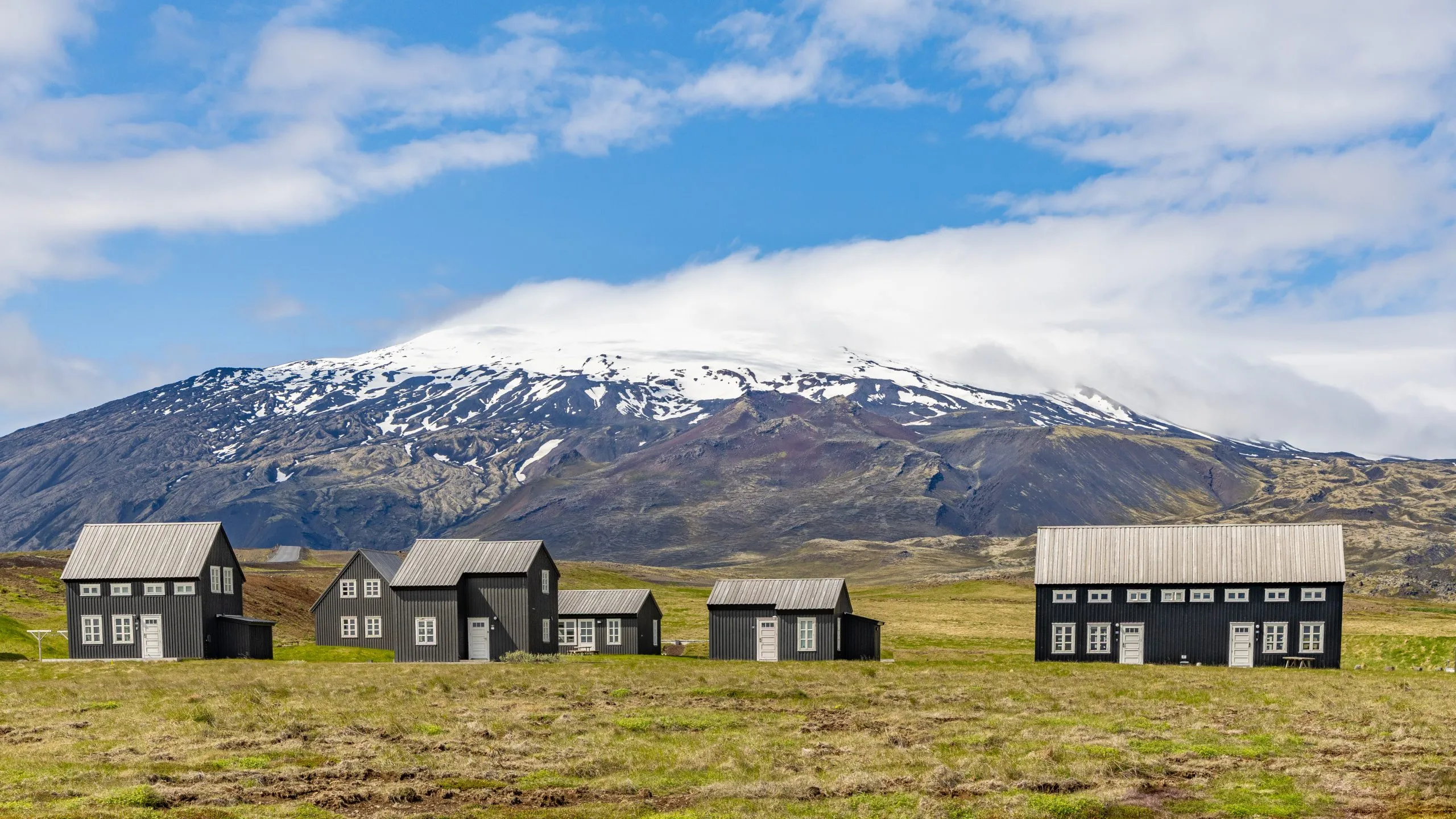
The huts are typically staffed by volunteers who maintain the facilities and assist hikers with information and advice. Most are open and manned during summer but closed in winter. Some remain open in late winter/early spring, but access to these huts in winter often requires snow hiking, skiing, or specially equipped vehicles.
Huts in Iceland range from small, offering basic facilities like bunk beds and communal kitchens, to larger ones with more amenities such as hot showers and dining rooms. The larger ones might have a shop selling food and supplies, so carrying extra Icelandic Krona (ISK) is advisable.
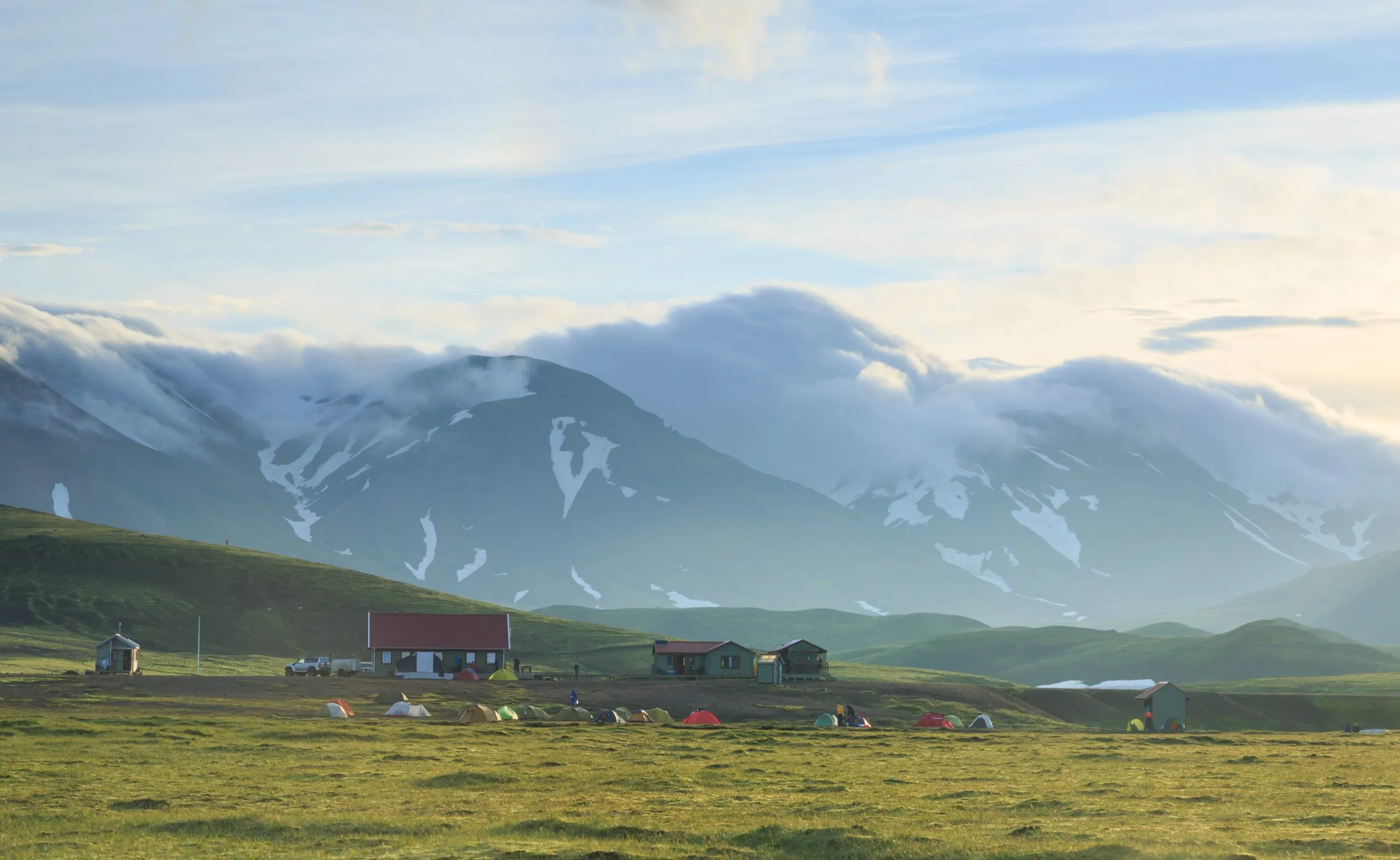
Most huts are self-catered. They do not offer hot, ready-made meals, so hikers should carry their own food and cooking equipment. However, the ones along the Laugavegur trail do sell some supplies like dried food, soda, and candy bars.
Hikers might also find gas or wood-burning stoves available for cooking in some larger lodges, including all the huts on the Laugavegur trail. But some less visited require you to bring your own camping stove.
When staying in Icelandic huts, hikers should bring their own sleeping bags, as blankets are not provided. The inner spaces are warm enough not to need a heavy-duty sleeping bag. In larger huts, like the ones on the Laugavegur Trail, you can expect running water and water toilets, but smaller ones might require fetching water from a nearby stream and using a latrine.
Hut rules emphasize cleanliness, tidiness, and consideration. Key rules include:
There are six huts on the Laugavegur Trail, each offering mattresses, toilets, cold running water, and a communal kitchen. These huts are heated but don’t have electricity for charging devices. Booking in advance is essential for them due to their popularity.
To learn everything there is to know about the Laugavegur Trail in more detail, visit our Ultimate Guide to Iceland’s Famous Multi-Day Hike.
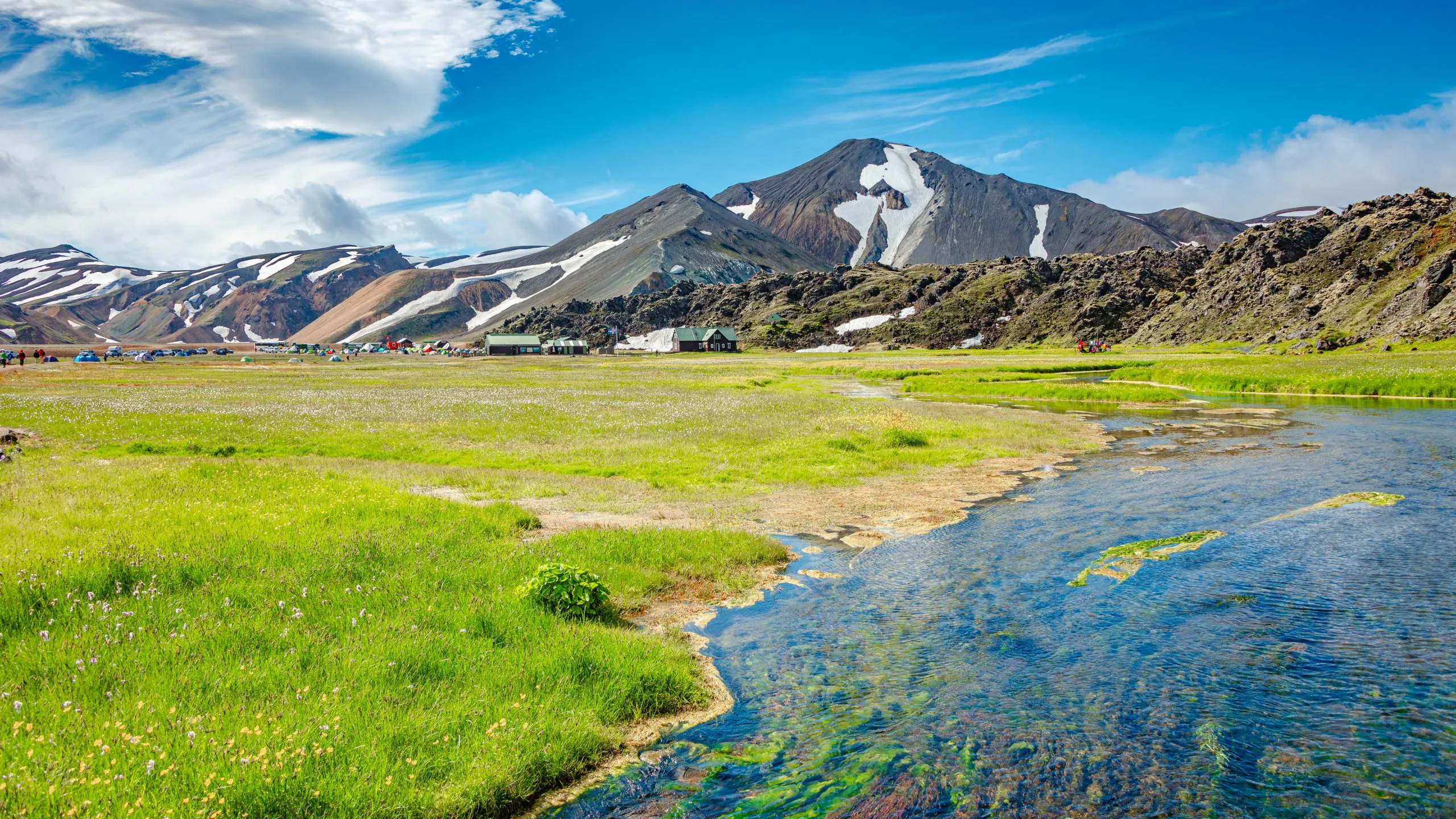
Iceland’s landscapes are defined by dramatic contrasts: geothermal areas like Geysir, with steaming springs and gushing geysers, alongside majestic waterfalls such as Skógafoss and Seljalandsfoss. The island is dotted with vast glaciers, including the immense Vatnajökull, and Þingvellir National Park showcases the country’s volcanic origins. These natural wonders provide a glimpse into Iceland’s diverse and dynamic geological tapestry.


Iceland’s Iconic Trails: A Photographer’s Guide
Enter your email below to receive your FREE e-book!
